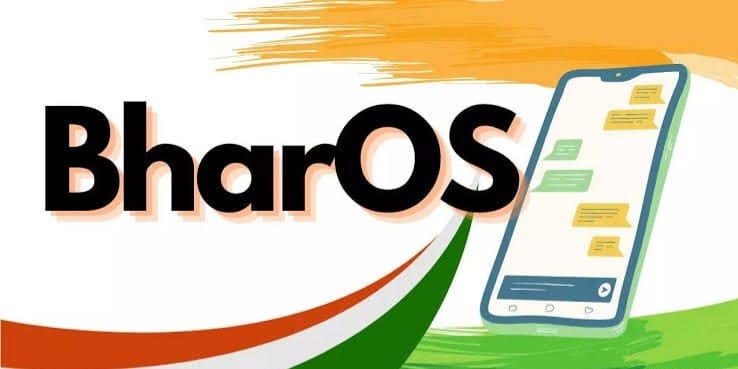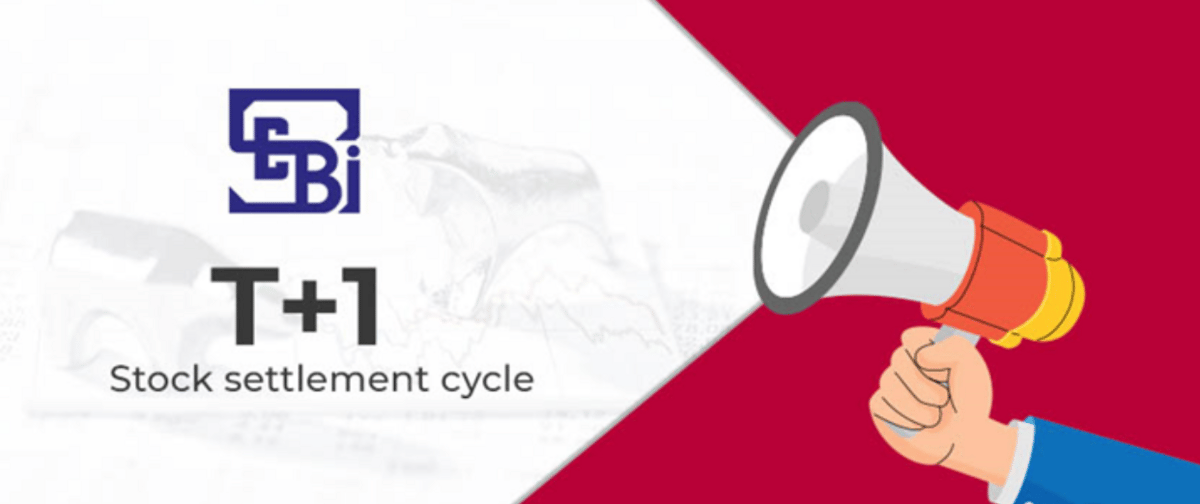- The FinOak
- Posts
- Indian Stock market to have T+1 settlement cycle
Indian Stock market to have T+1 settlement cycle
Indian stock market to have T+1 settlement cycle!

Hello, FinOak readers! This week has saw some major happenings, read on to know about India's own operating system BharOs, India to adopt T+1 settlement cycle for stocks and green bonds in the weekly wrap up column.In Personal Finance section, we have compared two investment avenues, Post office Deposits and National Saving certificates, for conservative investors and which option is best for you.For our Featuring Future Leaders column we have Vedant Somani, second year student at St. Xaviers College, who has already completed his FRM certification and bagged a lucrative internship opportunity at D.E. Shaw read on his story as to how he did it!
Column 1
Weekly Wrap Up
In today’s Edition
BharOS: India's own operating system
Advent of the Green Bond Market in India
Liquidi-ous India!
1.

Upset about transnational tech enterprises using the data of Indian citizens, and how there are no feasible druthers for the millions when it comes to Google, the government of India wanted to develop an indigenous mobile operating system that could go toe-to-toe with Google’s Android OS, and have the added perk of prioritising sequestration and being safe.
To that effect, IIT- Madras lately blazoned that one of the startups from its incubators has developed a new homegrown operating system called BharOS or Bharat OS. BharOS promises to be a more secure and private mobile operating system and is meant for India’s 100 crore smartphone druggies, who have no option besides Android and iOS, operating systems that are possessed and managed by American companies.
What's BharOS? How was it made?
Bharat OS or BharOS is supposed to be India’s answer to Google’s Android and Apple’s iOS. Because all smartphones either run on Android or on iOS, there has always been a pervasive uneasiness about how these companies collect, store and use the data that's generated by Indian smartphone druggies. BharOS tries to address these issues.
BharOS is an Android Open Source Project developed by JandK Operations Private Limited (JandKops), a non-profit association incubated at IIT Madras.
How is BharOS different from Android?
Technically, BharOS is very similar to Android because they share the same basics. Because BharOS uses AOSP or Android Open Source Project, the functionalities and the methodologies both OS use are essentially the same. What sets BharOS apart from Android, is that it is free from Google Services and Apps. Google has used its preinstalled apps and services to collect data, sometimes without explicitly asking a user. Similarly, other apps from Google’s PlayStore share data with third-party services.
BharOS does not come with any such preinstalled services or apps, and hence, is deemed to be more secure.
How to install BharOS?
As of now, there's no detail as to how druggies can get their hands on BharOS. Removing an operating system and installing a fresh bone on mobile handsets is a seriously dreadful business, a commodity that indeed the most seasoned tech suckers suppose doubly ahead trying.
So in all likelihood, BharOS will be limited to new and upcoming devices, and perhaps not be launched officially for older devices. Moreover, BharOS is currently only for those organizations that have stringent privacy and security requirements and “whose users handle sensitive information that requires confidential communications on restricted apps on mobiles.” The OS isn’t likely to be released to the masses anytime soon.
It is expected that OS developers will collaborate with OEM- Original equipment manufacturers, to launch the smartphone supported by BharOS in the future.
When will BharOS release?
The inventors of BharOS haven't handed any information on its release date or supported smartphones. Still, it's suspected that the inventors will unite with smartphone manufacturers to launch smartphones running on BharOS in the near future.
How will apps work on BharOS?
BharOS won’t have the multitude of dereliction apps that android does. Rather, it'll let druggies choose what apps they want to use for their own bias. Likewise, it'll have its own app store which will allow druggies to download and install apps, barring the need for the Google App Store.
There's also a possibility that it'll allow druggies to sideload apps in a much easier manner than Android allows. There's also a possibility that barring many essential apps, BharOS will favor indigenously developed apps or apps that have been designed with a particular focus on India and Indian druggies.
Which is better BharOS or Android?
It isn’t that simple actually. BharOS sure has its benefits especially when we speak of security and privacy. However, Android has a few legacy advantages that will be hard for people to give up. Android actually supports a wide range of devices and hardware, ranging from a basic smartphone worth Rs 6000-7000 or even lower to a complex, and expensive, a foldable smartphone that costs north of Rs 1,00,000. We don’t know what sort of devices BharOS will support.
Another advantage is that Android has a very wide user base so bugs and issues are quickly reported and resolved. Very rarely do we get to see bugs in the Android OS – most bugs crop up when OEMs try to lay their own UI on top of Android. We also don’t know how frequently will BharOS receive updates, security, or generational.
2. Liquidi-ous India!

Hurrah, It’s finally happening!
After China, India will be the second-largest market to adopt the "T+1" settlement cycle for stocks. The majority of global markets, including those in the US, Europe, and Japan, continue to operate on a "T+2" settlement cycle. The switch to the new regime would complete on 27 January, 2023 i.e. today and investors are really grate, cut…., ‘trade’ful to SEBI for it.
But,
What is ‘T+1’ settlement?
This settlement cycle effectively means that any transaction resulting from the purchase or sale of shares will appear the next day in the investor's demat account. In other words, if a trade is executed on Monday, it will be settled (i.e. the transfer of cash and securities will be completed) on Tuesday.
How were trades settled earlier?
Trade settlement in India used to occur on a "T+2" basis, which meant that the securities that an investor bought or sold would appear in his/her demat account after two days.
How did the exchanges implement the ‘T+1’ cycle?
The transition to T+1 has been happening in batches based on market cap (small to big) since Feb 2022. The 100 stocks with the lowest market capitalization made up the first phase of implementation in February 2022, and then stocks were steadily added month after month. The final batch of equities to transition to the "T+1" cycle contains 256 stocks in total. These comprise all of the equities that make up the Nifty 50 and Sensex, including State Bank of India, Reliance Industries, Infosys, Tata Motors, and Dr. Reddy's Laboratories. A few notable examples of big midcap stocks are Dabur India, Ambuja Cements, Tata Chemicals, PB Fintech, FSN E-Commerce, Delhivery, and One97 Communications. The last batch consisting of F&O stocks would be officially moved to T+1 today, making the entire Indian market a T+1 market.
Advantages and Risks of ‘T+1’ Settlement?
Reducing the number of settlement days will allow investors to have more liquidity, which will improve trade and participation. Additionally, the T+1 settlement cycle helps to reduce the risk of counterparty default, as it provides more time for market participants to assess the creditworthiness of their counterparty before settling the transaction.
There could be challenges in settling the trades in case there are any downtimes for a bank or a large bank. Moreover, higher volatility in capital markets could pose a contagion risk to the ecosystem.
Do ‘T+2’, ‘T+3’ have a dark future?
No, infact for most countries around the world, the settlement cycle is T+2 and T+3, or trade date plus two/three days. This allows for additional days for market participants to manage their positions and liquidity, and for regulators to monitor and manage any potential risks that may arise from securities transactions. Everything has its pros and cons.
“India will become the first major market to completely move to a T+1 settlement cycle (China is partly T+1). It is crazy how far ahead we are in terms of market infrastructure and safety, even when compared to the developed world,” Nithin Kamath (Co-Founder at Zerodha) said in one of his LinkedIn posts.
Atanuu Agarrwal, Co-Founder, Upside AI said, “Most markets around the world function on a T+2 basis. T+1 settlement puts India ahead of even the US, which is the preeminent destination when it comes to capital markets. This is a fantastic milestone and another feather in the cap for India’s financial ecosystem.”
3.
The Advent of the Green Bond Market in India

The first tranches of Sovereign Green Bonds (SGrBs) valued at Rs 8,000 crore were fully subscribed to, this Wednesday. According to the auction details provided by the Reserve Bank of India (RBI), the interest rate for SGrB 2028 due 2028 is 7.10% and SGrB 2033 due 2033 is 7.29%. Coupon rates for sovereign green bonds are broadly in line with G-Sec.
As announced in the 2022-2023 Federal Budget, the central government will issue SGrBs as part of its total market borrowing to mobilise green infrastructure resources.
On January 25th, this offering was sold in 5-year and 10-year tenors through a uniform price auction. Its proceeds will go towards unspecified projects in line with India's green bond framework. Thus together, they form a modest test balloon for the country's larger green finance goals.
Anticipation of Green Bonds
Before the auction took place, Parul Mittal Sinha, Head of India Financial Markets at Standard Chartered Plc (Mumbai) stated that "We expect demand from foreign portfolio investors (FPI) to increase over time as more ESG non-resident funds get set up with local currency mandates, and obtain FPI license to invest in debt markets in India,". Not only this, Nomura Holdings Plc and Barclays Plc also both agreed to the same.
In anticipation of the green bonds, Ashhish Vaidya, head of treasury at DBS Bank in Mumbai said that “The government is testing waters by issuing a rupee green bond, it will be interesting to see whether the global green pool of funds is willing to invest in an INR issue.”
Green bonds are typically issued by Indian companies on the offshore market, where demand has been strong. The Export-Import Bank of India's recent $1 billion issue was more than 100% oversubscribed. Authorities promoted the 80 billion rupees ($984 million) issue to the country's largest domestic asset managers, including state-run insurers and pension funds, as well as foreign investors. The insurance industry regulator allowed the bonds to count toward the insurers' required infrastructure investments.
What Next?
Prime Minister Narendra Modi has ambitious plans for renewable energy and projects that will make the country more resilient to extreme weather and rising temperatures. He said he hopes to be able to procure it.
It will be more challenging as Greeniums – discounted pricing for environmental projects – is shrinking worldwide. A Thai sustainable bond issued in September 2022 was valued at a coupon 8 basis points lower than a comparable Thai bond. Banking analysts, along with traders polled by Bloomberg, expect this sale to bring the green down, two to three basis points.
The second auction for an additional 8,000 kroner will take place on February 9th, 2023 where the SGrBs will be issued at a flat-price auction and 5 percent of the announced sale amount will be reserved for retail investors, the RBI said, adding that these securities are considered eligible investments for SLRs.
The bond issue on 25th January and 9th February will together form a modest test balloon to meet the country's broader green finance goals.
Column 2
In today’s Edition
Post Office FD or NSC: Which Investment is Right for You?
1. Post Office FD or NSC: Which Investment is Right for You?

When it comes to investing, there are many options to choose from, and it can be overwhelming to decide where to put your money. Two popular options for conservative investors looking for guaranteed returns and capital protection are post office fixed deposits and National Savings Certificates (NSC). Both of these investment options are backed by the government and offer tax-efficient alternatives for those looking to save for their future.But which one is the best option for you?In this article, we will compare post office fixed deposits and NSCs to help you make an informed decision about where to invest your money.
Post office fixed deposits, also known as Time Deposit Accounts (TD), are similar to fixed deposits at a bank. They offer guaranteed returns, and a minimum deposit of INR 1000 is needed. The interest is calculated quarterly but paid annually, and the account types have maturities of one year, two years, three years, and five years. Section 80C of the Income Tax Act of 1961 is applicable to investments made under 5-year TDs, allowing for tax deductions of up to ₹1.5 lakhs every fiscal year.
National Savings Certificates (NSC), on the other hand, also come with a tenure of 5 years and a similar interest rate of 7.0% compounded annually but payable at maturity. A minimum deposit of Rs. 1000 is required to open a 5-year NSC account, and deposits can be made in multiples of Rs. 100 with no upper limit. The interest is taxed as per the individual’s tax slab rate.
While both options are suitable for conservative investors seeking fixed returns along with capital protection and tax savings, NSC has an added advantage where interest accrued is reinvested in NSC, and thus the reinvested interest amount is also eligible for deduction under Section 80C for coming years. It makes NSC a better option than Post Office FD.
So, what should you do? If you're looking for a guaranteed return with low risk, post office fixed deposits and National Savings Certificates (NSC) are great options. However, if you're looking for a better option, NSC may be a better choice. It allows you to reinvest your interest and claim tax deductions on the reinvested interest in the coming years.
It is also worth noting that NSC can be used as collateral for securing loans from banks, giving you more flexibility when it comes to using your investment.
In conclusion, both post office fixed deposits and National Savings Certificates (NSC) are great options for conservative investors looking for guaranteed returns and capital protection. NSCs offer the added advantage of being able to reinvest the interest and claim tax deductions on the reinvested interest in the coming years, making it a better option than post office fixed deposits. However, ultimately, the decision is yours, and you should consider your own financial goals and objectives before making a final choice.
Column 3
Featuring Future Leaders: Vedant Somani

Hi everyone, I am Vedant, a second-year student at St. Xaviers College, Kolkata. I am currently pursuing a bachelor’s in commerce and cleared both levels of FRM. I am currently interning at EY India in the Financial Services and Risk Management vertical and will be interning as Financial Research Analyst at The D.E. Shaw Group.
Internships
So the question that everyone asks me is how I was able to convert Internships at such prestigious firms. So let me share my Interview experience with D.E. Shaw Group.Internship Experience at D.E Shaw:
D.E Shaw was an on campus opportunity. The firm only hires 1-2 interns for the finance role from our campus, hence, it was a very competitive one. As a part of the recruitment process, we were asked to appear for the aptitude test followed by an Asynchronous Interview, after which only 12 candidates were selected for the 1st stage of the Interview round (3 were selected for the final round). As a piece of advice to first years, it is important to know what you wrote in your CV and how you can present yourself in front of the interviewer because the interviewer will ask you the questions in the direction you are taking your interview to. Like in my case, when I was asked to give a brief overview of my CV, I told them about my academics, courses I did in the finance domain, and three publications on finance topics (I was asked about ESG because I mentioned it as one of the topics in the CV Walkthrough), and PORs. This was followed by discussions on some statistics-based questions and a guesstimate was asked from me. On the day of the second stage of the Interview, I was having my practical exam which was clashing with my interview slot and I had to postpone the same. In the beginning when the interviewer asked me how my day was and I told him about this, he asked me a follow-up question from my practical subject topics only like Kurtosis, and Normal Distribution. This was followed by some serious discussion on finance-based questions.
If you want advice from me for the interview preparation for such prestigious organizations, it will be to know your CV well, what you want to achieve from the internship, and how you will benefit from the role offered. It is important to stay calm because the interviewer will try to create stressful situations and want to test your confidence, and ability to handle pressure. Profile building is key and in my opinion, there is no ideal profile and the way is to start early. The other way of getting internships is cold-emailing on LinkedIn and believe me this is one of the best ways to reach out to people from your dream firms. Key Takeaway: When you appear for an on campus interview you need to understand that your main competition is not students from across the country rather students from your campus. So accordingly sell yourself during the selection process. Try your level best to get into the driver's seat during the interview in the early stage, take the interview in your forte i.e., a place where you have a competitive advantage over the other interviewees. If you are able to do that, you can increase your chances of getting selected.
And lastly, stay firm in your opinion, it's cliche but by simply being yourself and expressing your ideas and perspective shows the fact that you are not afraid to share your ideas and it also makes you appear more confident.
Courses and FRM Journey
I am asked many times, which courses we should do for a better profile or to know our interest in a specific domain. In my opinion, courses are very good to test your knowledge and interest in a specific field but they will not guarantee you any good internships, to be honest. They will add some value but the truth is to know about your preferred domain and your interest in it, go for professional courses as I did. To be very honest, in my first year I had nothing to do and I enrolled myself in FRM Part 1 out of fear of missing out on my peers. While preparing for the same, I understood that such courses are well structured which is missing in courses you do from Coursera or Udemy. I went on reading E-Books on subjects in FRM that were available on the internet and Telegram to have a better hold over it. These books will give you an idea of whether you want to go for a course like FRM, or CFA or not.
When someone asks me whether they should do a course in Excel, SQL or any other software just for the sake of a certification, my only answer to them is do that certification which will help you in your future. If you are a person who wants to make a career in actuarial or finance, then courses like Excel, SQL, Power BI will help but again it depends on your career line. One technical skill which I believe you should learn is Excel, either by enrolling in a course or learning it from YouTube channels because Excel is something which is used everywhere.
Key Takeaway: Online courses although help you gain a decent amount of knowledge, the ease of accessibility makes them less reliable. However, if you are able to show the interviewer that you actually got to learn something from that course and also applied the learnings, it can give you a good edge. The best way to do so, is adding links to the projects in your resume and sharing them on linkedin as well.
Professional courses obviously add a sense of reliability but again are quite expensive and the number of people clearing professional courses like CFA, FRM has increased massively. So primary focus should lie on practical applications of your learnings and how you could link theoretical aspects into real life. A simple example from my Interview: How could you implement Regression Modeling for forecasting movement of Nifty 50.
Societies
I always gave more importance to my academics because I believe it is one of the important parts of my application for an internship or for any other thing. It is important to actively contribute to one society because that is enough, believe me. The active contribution and engagement in that society will give you various opportunities to learn different skills and network with people. When you are organizing a society event, you will be able to learn the art of event management which is very important as when you face problems in logistics or any other thing, it is where your management skills come into the picture and how you are able to handle that stress.
Key Takeaway: Societies are important but to an extent. Being a part of one good society can teach you a lot and mold you into a better person equipped with excellent time management, people management skills but do not mindlessly work in every other society. Stay focused in one and aim for PORs in that society. Given the limited time, it's better to focus your time and energy on one society rather than working across multiple societies. Consider the work, the seniors, the peers and learning opportunities while choosing the one society you wish to be a part of.
That is all from my side, I have tried to cover most aspects of my journey in college. A few general tips that I’d like to leave you all with are:
1. It's important to have a diverse profile at least in your undergraduate life, it shows that you don't hesitate to experiment and also depicts your versatility
2. A balanced approach goes a long way in driving success during college. Focus on academics but don't overlook extracurriculars, likewise, Academics should not be compromised in the name of extracurriculars.
3. Start building your confidence by starting small, and thinking big, a podium in a competition, a perfect score in a subject, or a great presentation, even the slightest thing which can build your confidence, Do it.
4. Start working on mastering one technical skill, MS Excel/PowerBi, etc. Application of skills is important. Build a project portfolio to gain an edge.
5. Don't let FOMO or peer pressure drive you into choosing a professional course. It's okay to not pursue any professional course however, one needs to channel the time into something productive.
6. Truth be told, Internships either teach you a lot or add a brand name to your resume. If an opportunity does none, there is no use in pursuing it. Don't fall for random internships, especially in your first year.
7. College societies are important, not everything. Don't worry if you didn't get selected into any, and don't waste your entire college life on societies, if you get into one/many. Prioritise one society, no use of several societies.
8. Try publishing articles/research papers on topics that interest you. They provide talking points during your interviews and help you stand out. A lot of B Schools and UG colleges feature various articles. In case your articles don't get selected, write on "medium" or build your blog using Wix.
9. Lastly build a peer group that motivates you to escalate your standards in terms of intellect and personality. "Chilling" in college is good. Too much "Chilling" is hazardous.
And that’s about it. If you have any questions, need any help, or simply wish to chat, feel free to reach out to me on LinkedIn. Cheers!
This will be it for this week, see you next Friday. Best RegardsTeam FinOak